On patrol with Kenyan forces inside Haiti's gang warzone
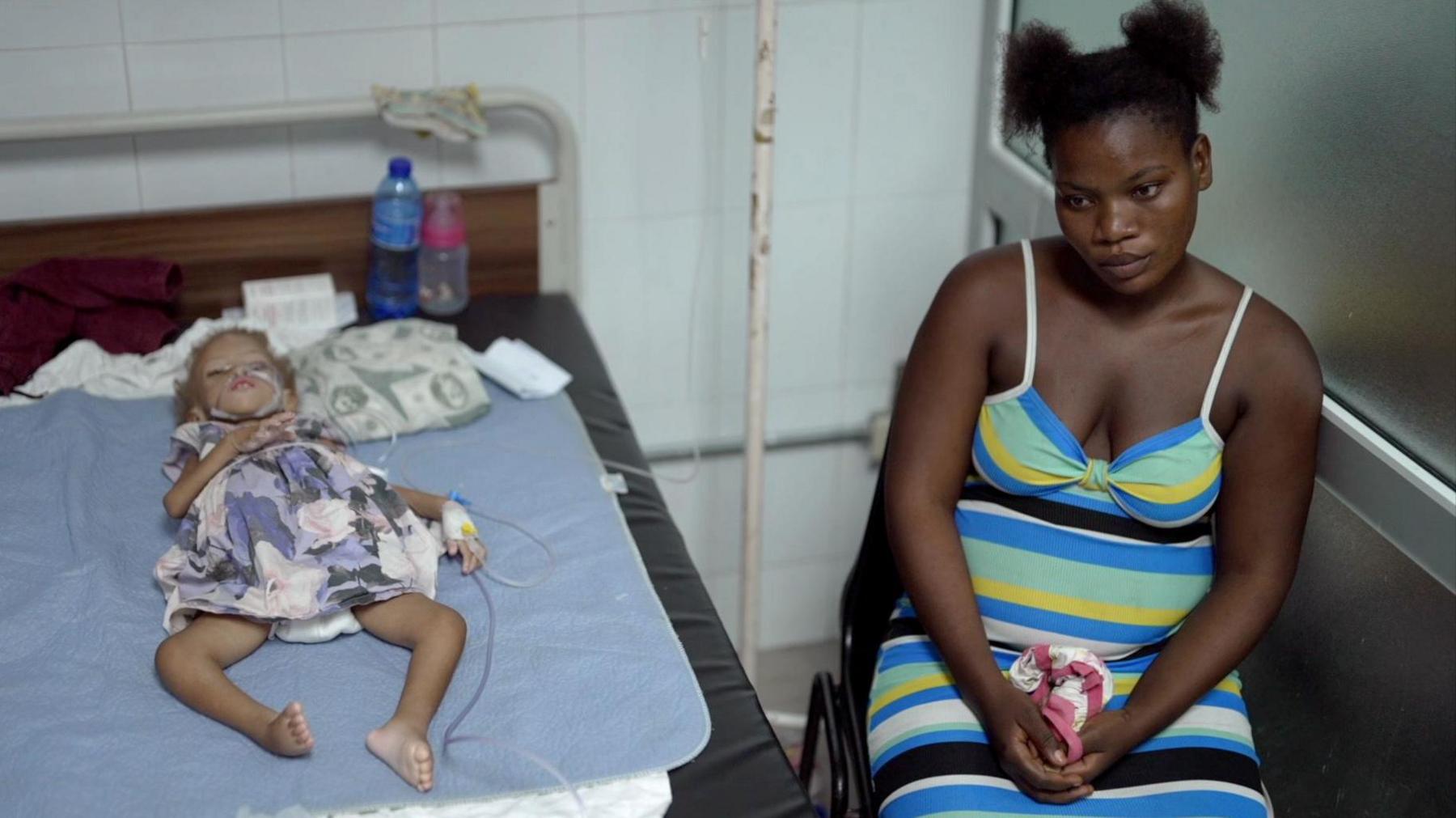
Venda hopes her two-year-old daughter Shaina will pull through
- Published
Two-year-old Shaina is hooked up to an intravenous drip at one of the few functioning hospitals in Haiti's capital, Port-au-Prince. Her mother, Venda, desperately hopes it will alleviate the acute malnutrition the emaciated young girl is suffering from.
Shaina is one of 760,000 children who are on the brink of famine in Haiti.
Terrified of the gang warfare raging in her neighbourhood, for weeks Venda was too frightened to leave her home to seek treatment for her daughter.
Now that she has made it to the paediatric ward, she hopes it is not too late for Shaina.
"I want to get proper care for my child, I don't want to lose her," she says tearfully.
Haiti has been engulfed in a wave of gang violence since the assassination in 2021 of the then-president, Jovenel Moïse, and now an estimated 85% of the capital is under gang control.
Even inside the hospital, Haitians are not safe from the fighting, which the UN says has killed 5,000 people this year alone and left the country on the verge of collapse.
The hospital's medical director explains that the previous day, police clashed with gang members in the emergency ward among terrified patients.
The victims of the violence are everywhere. One ward is full of young men with gunshot wounds.
Pierre is one of them.
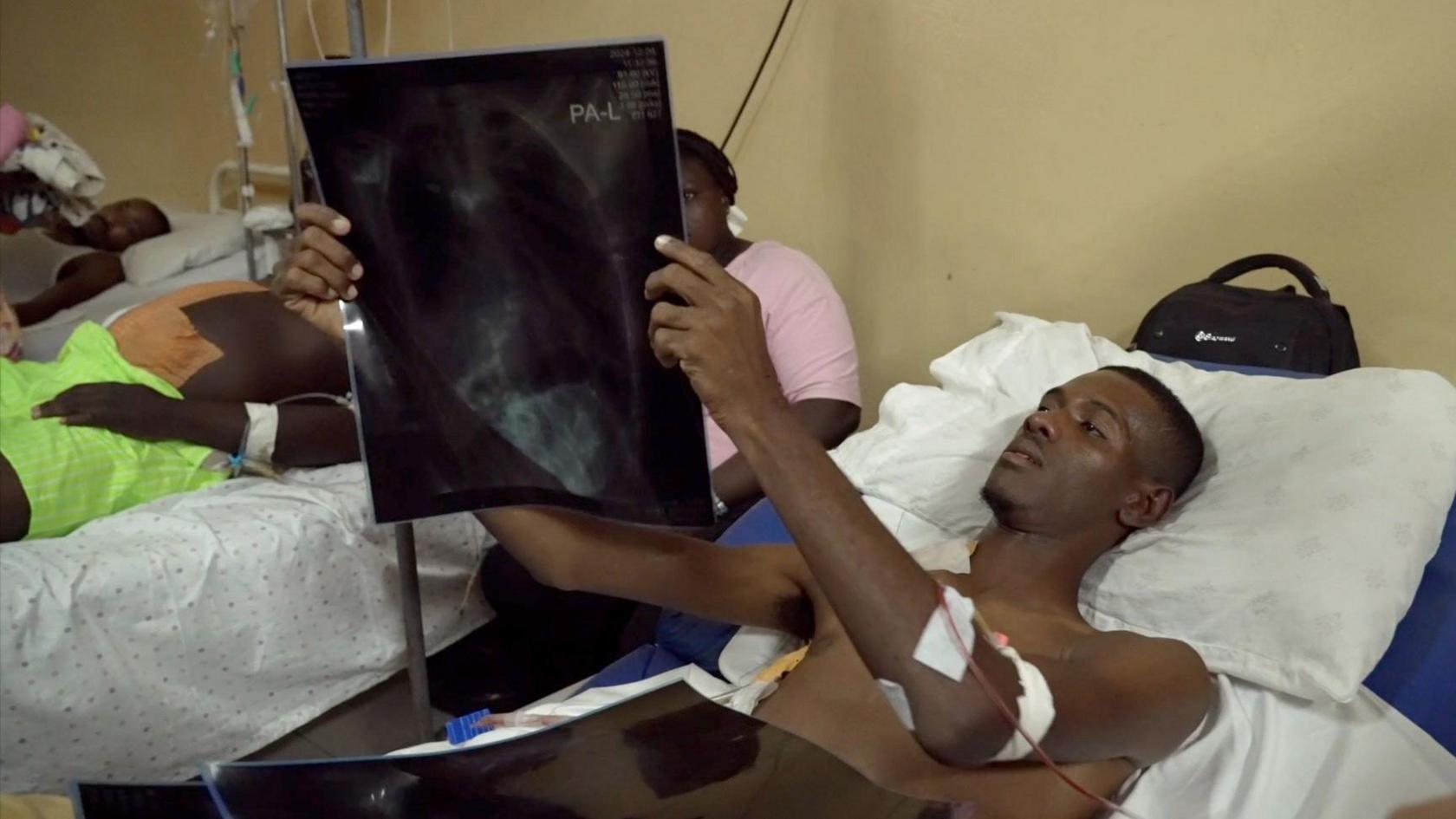
Pierre was caught in the crossfire of a gang battle
He says he was walking home from work when he was caught in the crossfire of one street battle, with a bullet ripping through his collar bone.
"I think if the government were more stable and had put in place better youth programmes, they would not get involved in the gangs," he says of the young men who make up a large proportion of the groups terrorising the capital.
To combat the growing violence, the UN Security Council authorised the establishment of a Multinational Security Support Mission (MSS) in October 2023.
Funded primarily by the US, the Kenyan-led force deployed to Haiti six months ago tasked with restoring law and order.
On a patrol in downtown Port-au-Prince, the ferocity of the gang violence is clear.
Kenyan officers drive along the streets in heavily armoured personnel carriers (APC) through once bustling areas of the capital that now lie deserted. Shops and houses are boarded up.
Burnt out cars and debris are piled high along the side streets - barricades built by the gangs to block access.
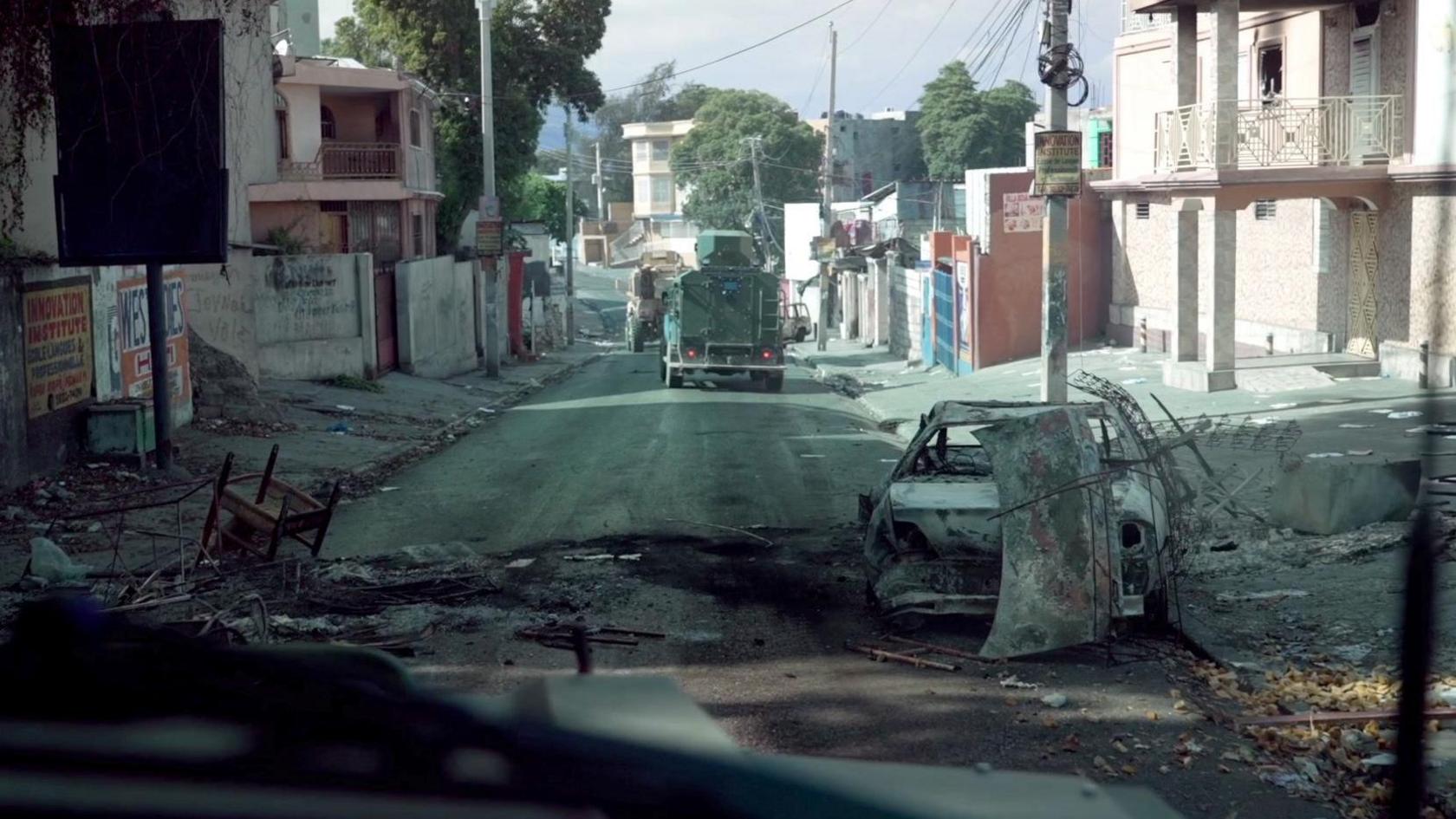
The patrol has to manoeuvre through the improvised barricades
The convoy weaves its way through the rubble when suddenly it comes under fire.
Bullets slam into the APC's armour as the Kenyan police shoot back with their assault rifles through gun ports in the vehicle's walls.
After nearly an hour of back-and-forth gunfire, the convoy moves on.
But it is not long before there are signs of more horrific gang violence. A human body burns in the middle of the street.
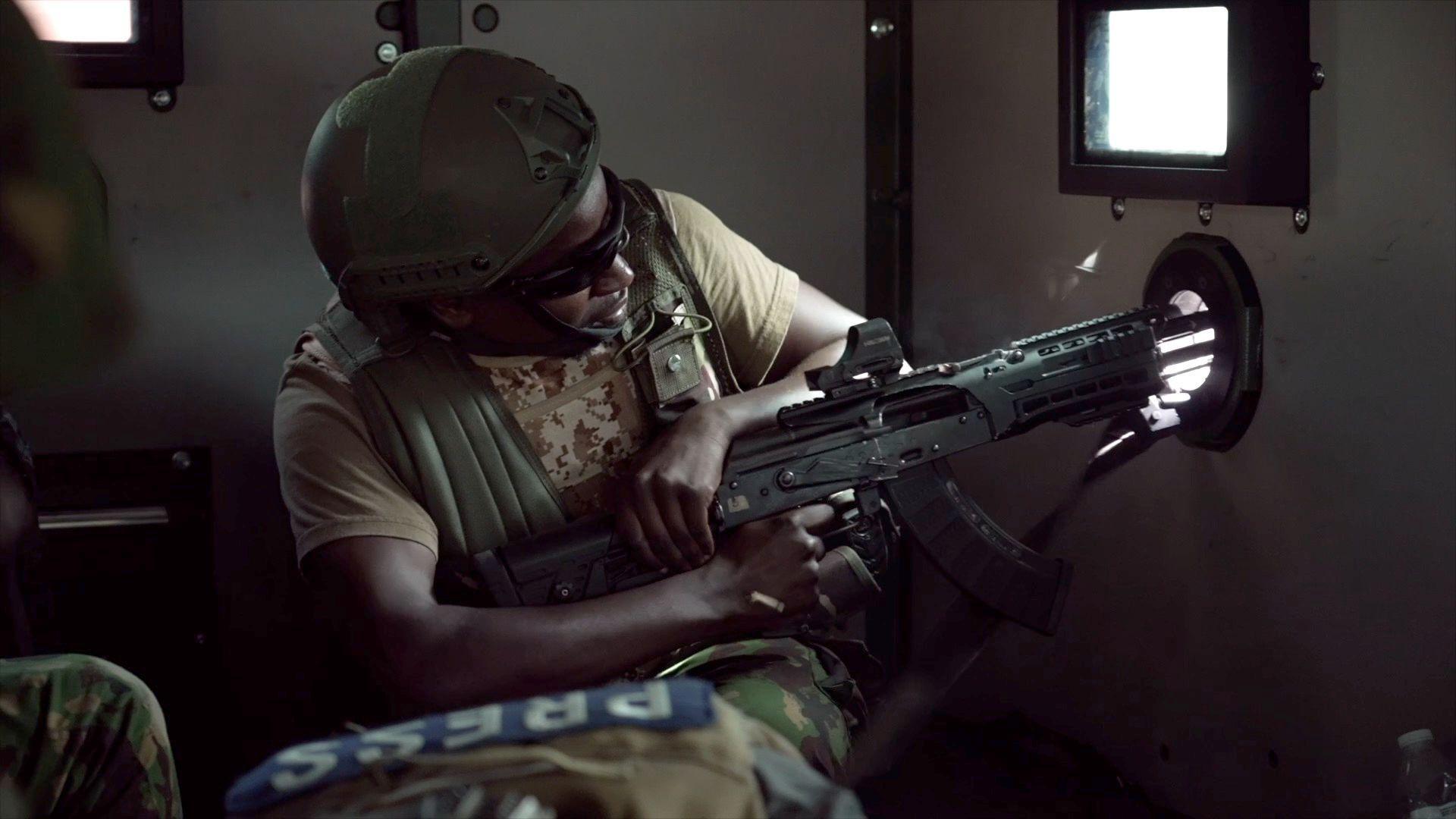
The Kenyans fire back through small openings in their armoured vehicle
One of the Kenyan police in our APC says he suspects it was a gang member cornered and killed by a rival group, his body set alight to send a gruesome warning.
The Kenyan officers on our patrol are by now well accustomed to seeing this sort of brutality on the streets of Port-au-Prince, but they also tell us they are exhausted.
Four hundred officers arrived in June - but they are hugely outnumbered. In July, Haiti's government estimated there were 12,000 armed gang members in the country.
The Kenyans were promised additional personnel. When the UN authorised the mission, a force of 2,500 was envisioned, but that support, which was supposed to arrive in November, has yet to materialise.
Despite the situation, the force's leadership remains optimistic. Commander Godfrey Otunge is under pressure from the Kenyan government to make a success of this mission.
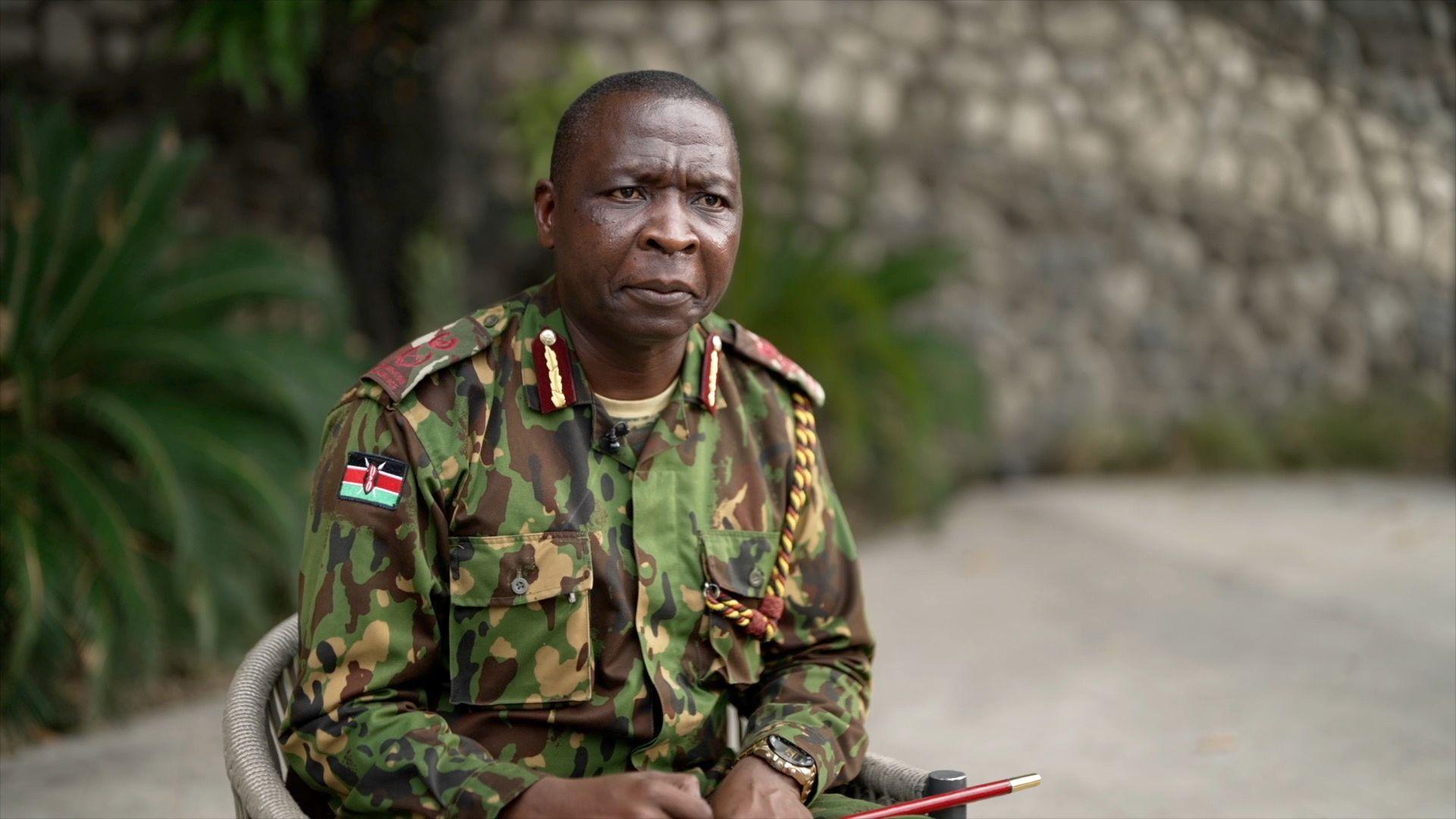
Godfrey Otunge is the commander of the Kenyan-led multi-national force in Haiti
The mission commander says there is "overwhelming support" for the MSS in Haiti.
"The population are demanding that our team extend and go to other places and pacify," he says.
The uphill struggle they face is clear at a former Haitian police station, which had been occupied by a gang but has now been re-taken by the Kenyan forces.
It is still entirely surrounded by gangs and, as officers head up to the roof, they come under sniper fire.
The Kenyan officers shoot back while urging everyone to remain low.
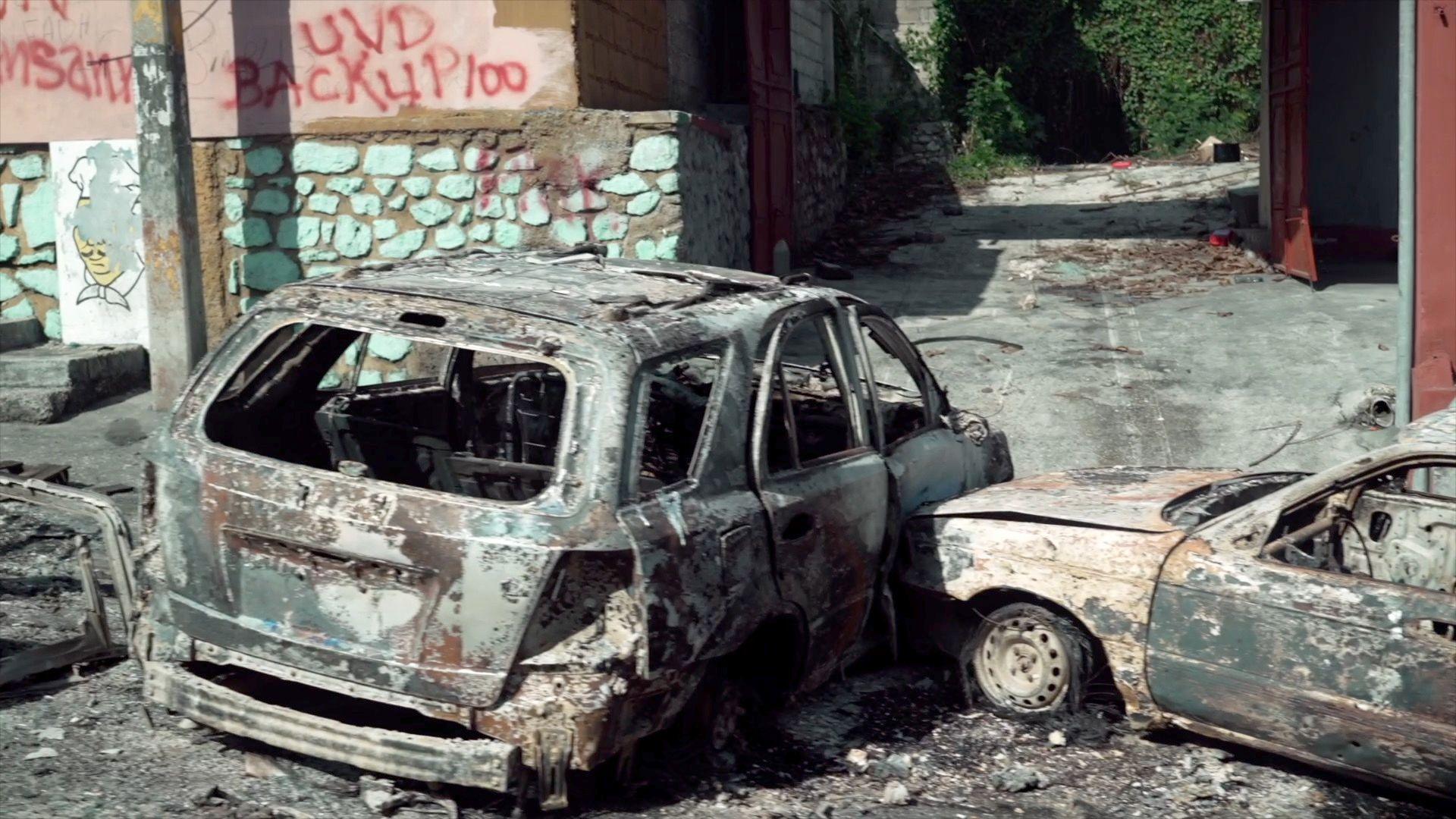
Much of the capital looks dystopian
The Kenyan officers say some of their much-delayed additional forces will arrive by the end of this year, bringing their total to 1,000.
And the support is urgently needed. There are areas in Port-au-Prince which are under such tight gang control they are virtually impenetrable for the police.
In one such area, Wharf Jérémie, almost 200 civilians were killed by a single gang over the space of one weekend earlier in December.
In total, as many as 100 gangs are estimated to be operating in the Port-au-Prince area, with boys as young as nine joining their ranks.
And the problem only appears to be growing. According to the UN children's agency, Unicef, the number of children recruited to the gangs has soared by 70% in a year.
One of the gang leaders to whom they flock is Ti Lapli, whose real name is Renel Destina.
As head of the Gran Ravine gang, he commands more than 1,000 men from his fortified headquarters high above Port-au-Prince.
Gangs like his have exacerbated an already dire situation in Haiti, and are known to slaughter, rape and terrorise civilians.
Gran Ravine is infamous for carrying out kidnappings for ransom, a practice which has earned Ti Lapli a place on the FBI's wanted list.
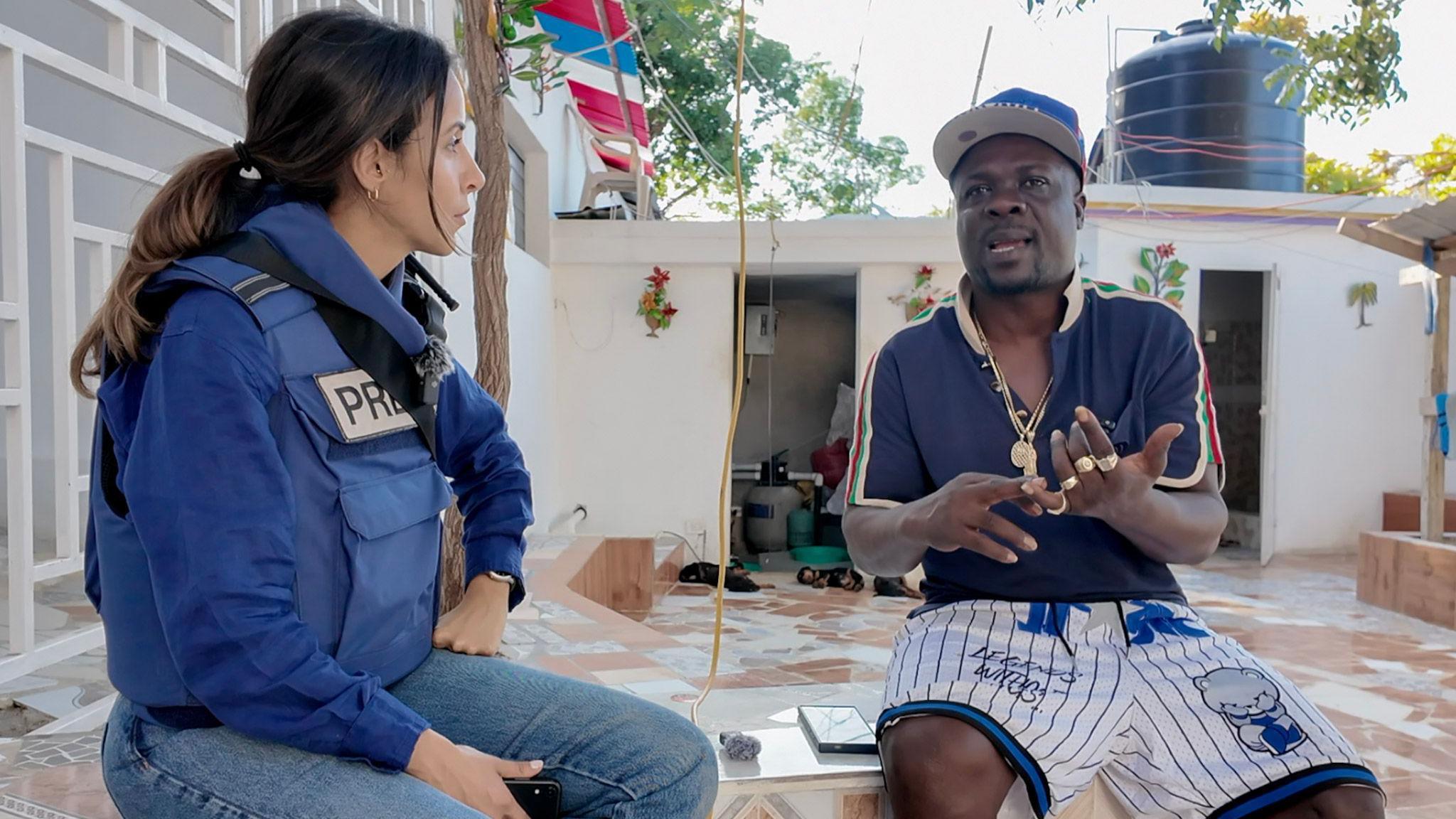
The leader of the Gran Ravine gang, Ti Lapli, spoke to the BBC's Nawal Al-Maghafi
Ti Lapli tells us that he and his gang members "love our country a lot" - but when pressed on the rapes and murders gangs like his inflict on civilians, he claimed his men "do things they weren't supposed to do [to members of rival gangs] because the same is done to us".
The reason children join Gran Ravine is simple, he says: "The government doesn't create any jobs, it's a country with no economic activity whatsoever. We are living on trash, it's basically a failed state."
He failed to acknowledge the strangulating impact gangs like his have on Haiti's economy. Often afraid to leave their homes for work, civilians are regularly extorted for money, too.
With 700,000 residents forced to flee their homes due to the violence inflicted by groups such as Gran Ravine, the capital's schools have become camps for internally displaced people.
Negociant is one of those who has had to seek shelter.
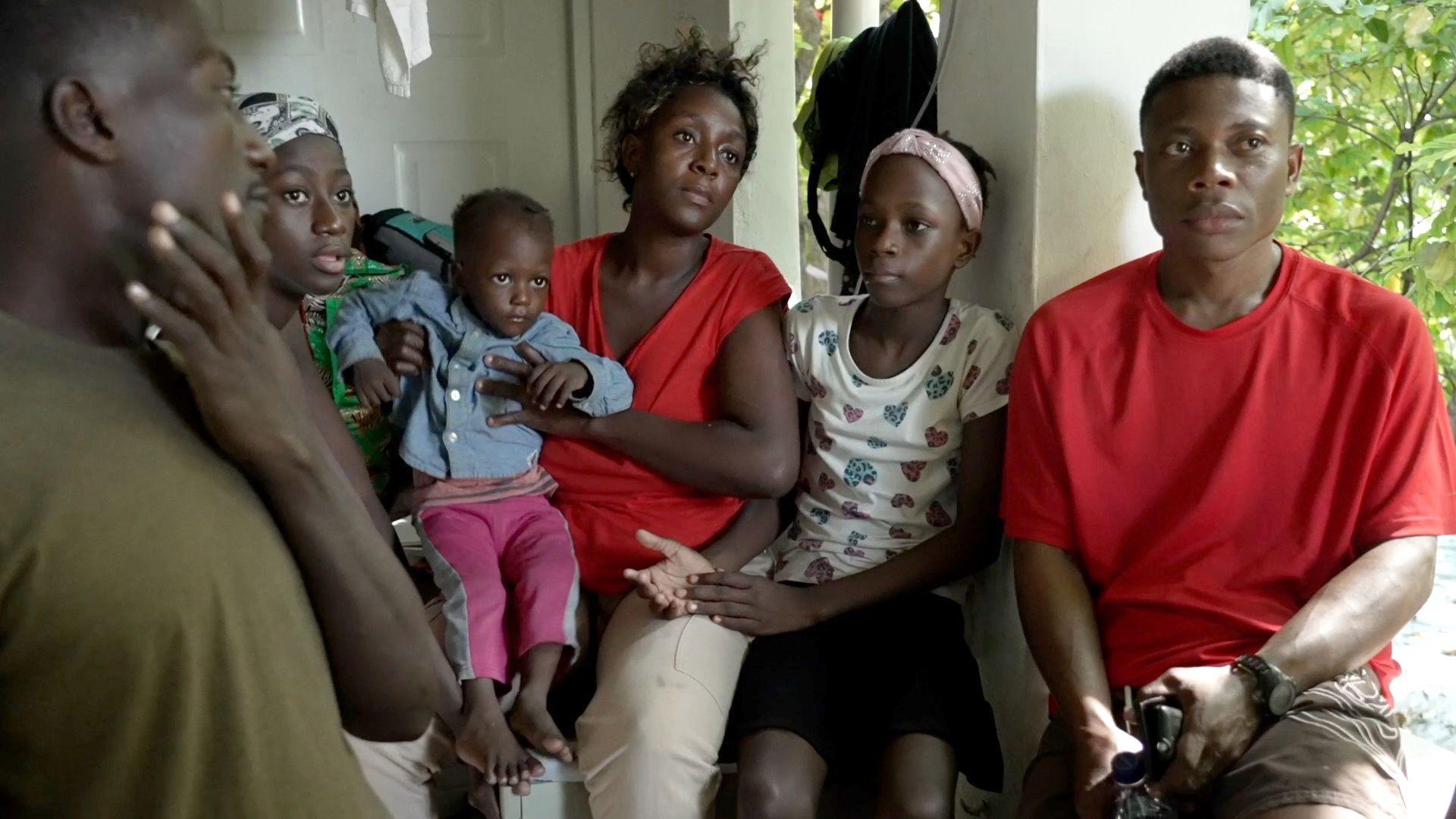
Negociant (centre) now lives with her family in a camp for displaced people
She sits with her five children, squeezed onto the small section of a school balcony they now call home.
"Just weeks ago I was living in my own house," she says. "But gangs took over my neighbourhood."
She explains that she left for an area of the city called Solino, until that too was overrun by gangs and she fled along with hundreds of other people.
"Today, again, I'm on the run to save my life and my children," she says.